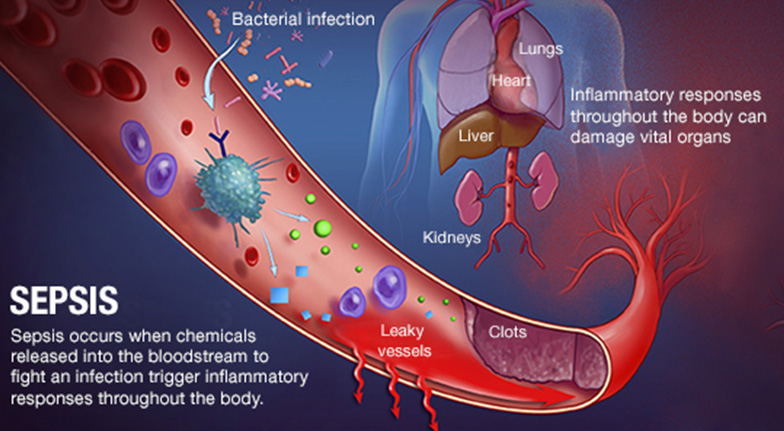Knee Replacement Surgery: Types, Treatment & Recovery
Knee substitution medical procedure — otherwise called knee arthroplasty (ARTH-line plas-tee) — can assist with easing torment and reestablish capability in seriously unhealthy knee joints. The method includes removing harmed bone and ligament from your thigh bone, shinbone and kneecap and supplanting it with a fake joint (prosthesis) made of metal composites, high-grade plastics and polymers.
In deciding if a knee trade is ideal for you, a muscular specialist evaluates your knee's scope of movement, soundness and strength. X-beams assist with deciding the degree of harm.
Your PCP can browse various knee substitution prostheses and careful methods, taking into account your age, weight, movement level, knee size and shape, and generally speaking wellbeing.
Why it's finished
The most widely recognized justification behind knee substitution medical procedure is to alleviate serious agony brought about by osteoarthritis. Individuals who need knee substitution medical procedures ordinarily have issues strolling, climbing steps, and getting in and out of seats. Some likewise have knee torment very still.
Gambles
Knee substitution medical procedure, similar to any medical procedure, conveys gambles. They include:
Disease
Blood clusters in the leg vein or lungs
Coronary episode
Stroke
Nerve harm
Indications of disease
Tell your PCP right away assuming you notice:
Fever more noteworthy than 100 F (37.8 C)
Shaking chills
Seepage from the careful site
Expanding redness, delicacy, enlarging and torment in the knee
A tainted knee substitution typically expects a medical procedure to eliminate the fake parts and antitoxins to kill the microscopic organisms. After the disease is cleared, one more medical procedure is performed to introduce another knee.
Side effects of Knee Arthritis
Normal sorts of joint inflammation are osteoarthritis, rheumatoid joint pain, and joint pain that occurs after a physical issue. Regardless of what type you have, the fundamental side effects of knee joint inflammation are agony, enlarging, and solidness in the knee. Over the long haul, it might get so firm that strolling is difficult or even inconceivable. You could have different side effects as well, contingent upon your sort of joint pain.
Counterfeit knees can break down
One more gamble of knee substitution medical procedure is disappointment of the counterfeit joint. Everyday use wears on even the most grounded metal and plastic parts. Joint disappointment risk is higher in the event that you stress the joint with high-influence exercises or unreasonable weight.
How you plan
Food and meds
Your primary care physician or anesthesiologist could encourage you to quit taking specific prescriptions and dietary enhancements before your medical procedure. You'll probably be told not to eat anything after 12 PM the day of your medical procedure.
Get ready for your recuperation
For a long time after the system, you could have to utilise bolsters or a walker, so set up for them before your medical procedure. Ensure you have a ride home from the clinic and help with ordinary undertakings, like cooking, washing and doing clothing. In the event that you live alone, your specialist's staff or clinic release organiser can propose a brief overseer.
To make your home more secure and simpler to explore during recuperation, consider doing the accompanying:
Make a living space on one story since climbing steps can be troublesome.
Introduce wellbeing bars or a safe handrail in your shower or shower.
Secure flight of stairs handrails.
Get a steady seat with a firm seat pad and back, and an ottoman to hoist your leg.
Sort out for a latrine seat riser with arms on the off chance that you have a low latrine.
Get a steady seat or seat for your shower.
Eliminate free carpets and strings.
On the off chance that your knee is seriously harmed by joint pain or injury, it might very well be difficult for you to perform basic exercises, like strolling or climbing steps. You might try and start to feel torment while you are sitting or resting.
Assuming that nonsurgical medicines like meds and utilising strolling upholds are at this point not accommodating, you might need to think about complete knee substitution medical procedure. Joint substitution medical procedure is a protected and successful methodology to ease torment, right leg disfigurement, and assist you with continuing ordinary exercises.
Knee substitution medical procedure was first performed in 1968. From that point forward, upgrades in careful materials and procedures have extraordinarily expanded its adequacy. Absolute knee substitutions are quite possibly the best system in all of medication. As per the Agency for Healthcare Research and Quality, in 2017, in excess of 754,000 knee substitutions were acted in the United States.
Whether you have quite recently started investigating treatment choices or have previously chosen to have absolute knee substitution medical procedure, this article will assist you with seeing more about this important system.
Life systems of the knee
Joints are the regions where at least 2 bones meet. Most joints are versatile, permitting the issues that remain to be worked out. Fundamentally, the knee is 2 long leg bones kept intact by muscles, tendons, and ligaments. Each bone end is covered with a layer of ligament that retains shock and safeguards the knee.
There are 2 gatherings of muscles engaged with the knee, including the quadriceps muscles (situated on the facade of the thighs), which fix the legs, and the hamstring muscles (situated on the rear of the thighs), which twist the leg at the knee.
Ligaments are intense strings of connective tissue that associate muscles to bones. Tendons are flexible groups of tissue that interface unresolved issue. A few tendons of the knee give strength and insurance of the joints, while different tendons limit forward and in reverse development of the tibia (shin bone).
The knee comprises of the accompanying:
Tibia
This is the shin bone or bigger bone of the lower leg.
Femur
This is the thigh bone or upper leg bone.
Patella
This is the kneecap.
Ligament
A sort of tissue that covers the outer layer of a bone at a joint. Ligament decreases the rubbing of development inside a joint. A sort of extreme connective tissue that interfaces muscles to bones and assists with controlling development of the joint.
Synovial film
A tissue that lines the joint and seals it into a joint container. The synovial film secretes synovial liquid (a reasonable, tacky liquid) around the joint to grease up it.
Tendon
A kind of extreme, flexible connective tissue that encompasses the joint to give backing and restricts the joint's development.
Meniscus
A bended piece of ligament in the knees and different joints that goes about as a safeguard, increments contact region, and develops the knee joint.
Why have knee substitution medical procedures?
There are three normal explanations behind the methodology:
Osteoarthritis
This kind of joint pain is age related, brought about by the typical mileage of the knee joint. It generally influences patients matured north of 50 years, however more youthful individuals might have it.
Osteoarthritis is brought about by irritation, breakdown, and the continuous and possible loss of ligament in the joints. After some time, the ligament wears out and the bones rub together. To redress, the bones frequently become thicker, however this results in additional grating and more agony.
Rheumatoid joint inflammation
Likewise called incendiary joint inflammation, the layer around the knee joint to turn out to be thick and aroused. Persistent aggravation harms the ligament, causing irritation and firmness.
Post-horrendous joint inflammation: this kind of joint inflammation is because of a serious knee injury. At the point when the bones around the knee break or the tendons tear, this will influence the knee ligament.
Recuperation
A patient who has a knee trade as a medical procedure will be hospitalised for 1 to 3 days, contingent upon how well they follow and answer restoration.
There will be torment, however a day after the strategy clinical staff will urge patients to get up and attempt to stroll about, typically with a mobile guide of some sort or another. Adhering to the guidelines for rehabilitation is significant.
Non-intrusive treatment meetings mean to reinforce the knee. These might be excruciating, however they fundamentally decrease the gamble of future entanglements.
Patients who don't have help at home might have to remain in the medical clinic for longer.
What do knee substitution inserts consist of?
The choice of knee substitution prosthesis plan and materials relies upon every individual patient. The fundamental embed parts are made of metal - typically titanium or chrome-cobalt amalgams. The inserts are focused, set up either with a concrete holding specialist or by osseointegration, in which a permeable metal stem stretches out into the tibia and the patient's regular bone develops into it. A plastic stage or spacer will be embedded between the tibial and femoral embed surfaces. The spacer is made of polyethylene.
Most femoral parts are made of metal combinations (cobalt chromium) or metal-clay amalgams (oxidised zirconium). The patellar part is plastic (polyethylene). The tibial addition part is likewise plastic (polyethylene). The tibial plate part can be made of the accompanying materials:
cobalt chromium (metal amalgam)
titanium (metal amalgam)
polyethylene (plastic)







Comments
Post a Comment